419 Search Results for AIDED language
February 26, 2014
by Carole Zangari -
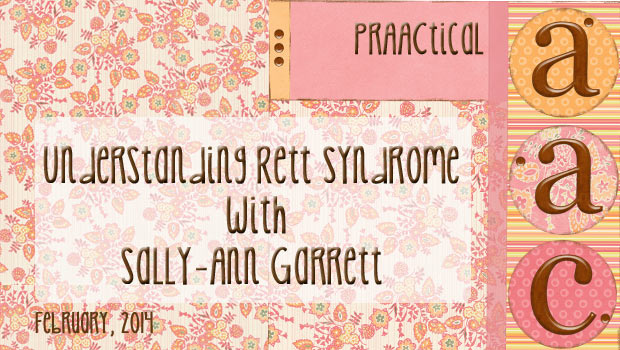
When we did our graduate training, there was little or no mention of Rett Syndrome, a genetic disorder involving a mutation of the MECP2 (Methyl CpG Binding Protein 2) gene on the long arm of the X chromosome. It is a complex disorder and the abilities of those who are affected by it are generally masked by the motor challenges that are a part of Rett. We’ve asked some professionals experienced in Rett and AAC to help us use this space to help us gain a better understanding of the disorder and its implications for AAC intervention. Sally-Ann Garrett (Highly Specialist Speech and Language Therapist; Reg. HCPC; MRCSLPT, Reg. ASLTIP) is one who agreed to do so and we are grateful for her perspective. Sally-Ann is semi-retired now but has worked with girls affected by Rett Syndrome for 30 of her 42 years as an SLT. She lived in Canada for a number... [Read More...]
January 14, 2014
by Carole Zangari -
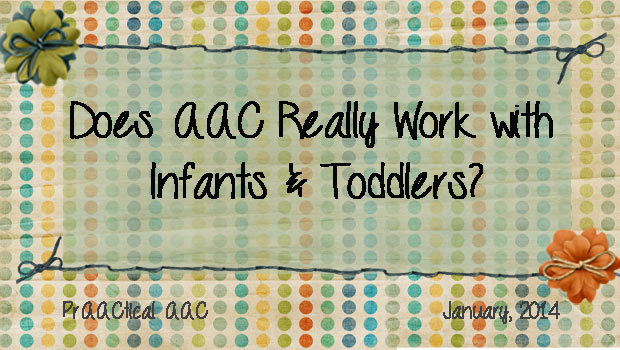
We are occasionally asked how old children have to be before you can begin teaching AAC. Our answer: There is no set minimum age. Nor is there any research evidence that one has to use an oral-language only approach for a set period of time before beginning AAC. Today, we’re delighted to be able to share an article on this topic with you. This article describes a research review in which Branson and Demchak identified a dozen research studies looking specifically at the use of various AAC tools and strategies with infants and toddlers. Data from 190 children up to 36 months of age were examined. Of the 12 studies reviewed, 7 met criteria for having conclusive findings. In 97% of all cases, the children’s communication skills improved. Looking only at the 7 most rigorous studies is even more encouraging: All 135 babies/toddlers demonstrated improved communication skills following AAC intervention.... [Read More...]
June 11, 2013
by Carole Zangari -
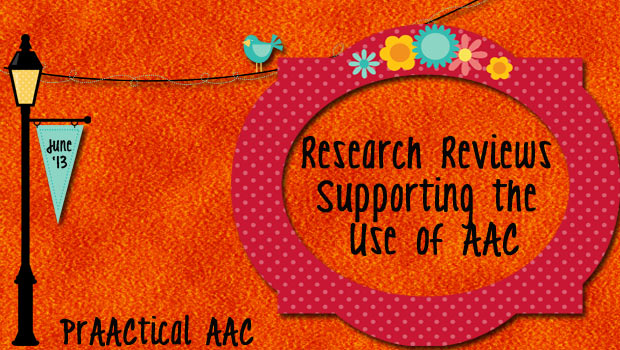
When recommending AAC, SLPs often find it useful to use research findings to support their clinical rationales. Sometimes we share articles with colleagues and families, or provide references in evaluation or consultation reports. In this post, we share a number of research reviews, studies which examined previously done research in AAC. Finding a relevant systematic is like hitting the jackpot, because the researchers have already done an exhaustive search of the literature on the topic, then analyzed the studies that met their criteria. Here are several research reviews that might come in handy during your AAC work. Ganz, J.B., Earles-Vollrath, T.L., Heath, A.K., Parker, R.I., Rispoli, M.J., & Duran, J.B. (2012). A meta-analysis of single case research studies on aided augmentative and alternative communication systems with individuals with autism spectrum disorders. Journal of Autism and Developmental Disorders, 42,1, 60-74. McCarthy, J., & Light, J. (2005). Attitudes toward individuals who use... [Read More...]
April 11, 2013
by Carole Zangari -
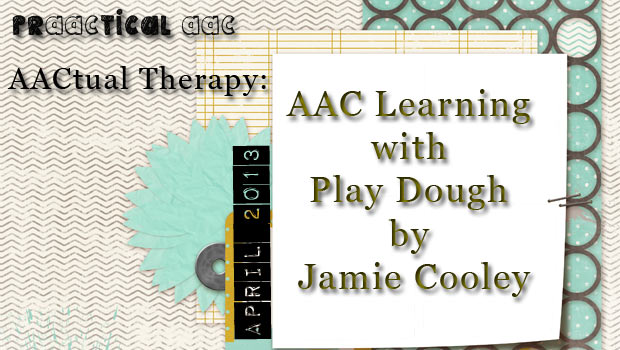
Today, we’re happy to introduce you to another AACtual Therapist, Jamie Cooley, the SLP for Belpre City Schools (belpre.k12.oh.us), located in Belpre, OH. She is a graduate of Ohio University (B.S. ’09, M.A. ’11) and currently resides in Athens, OH. Jamie did work at Ohio University focusing on AAC and children with autism under the instruction of Dr. John McCarthy and Dr. Joann Benigno. She has worked for Belpre City Schools for two years with students in grades K-12. In this post, Jamie uses a case study approach to share a lesson using Play Dough. Background Emma is a third grade student. She was born with hypoplastic left heart syndrome, and her cognitive and communication skills are significantly below age-norms. She receives most of her academic instruction in a resource room. Communicatively, Emma repeats many words and phrases, and combines up to two words on her own. This is... [Read More...]
February 1, 2013
by Carole Zangari -
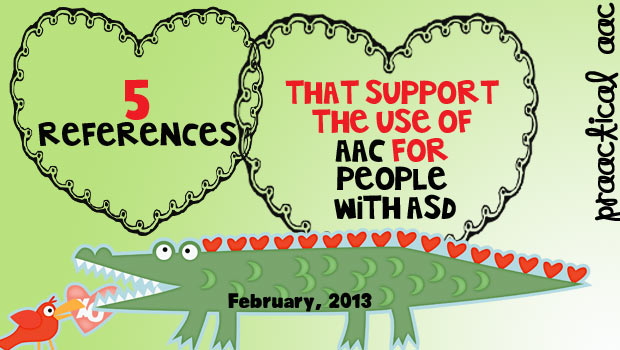
We occasionally get asked to provide empirical supports for some of the AAC tools and strategies used in our clinical work and teaching. Here are five references that we wanted to pass along. Ganz, J.B., Earles-Vollrath, T.L., Heath, A.K., Parker, R.I., Rispoli, M.J., & Duran, J.B. (2012). A meta-analysis of single case research studies on aided augmentative and alternative communication systems with individuals with autism spectrum disorders. Journal of Autism and Developmental Disorders, 42,1, 60-74. Systematic review of 24 single subject experimental design (SSED) studies investigated the impact of AAC interventions and concluded that aided AAC interventions had positive effects on communication and behavior skills. Although all picture-based AAC systems were effective, learners did best with SGDs or PECs. Checkley, R., Reidy, L., Chantler, S. Hodge, N., & Holmes, K. (2012). “Black white zebra orange orange”: How children with autism make use of computer-based voice output communication aids in their language... [Read More...]
December 30, 2012
by Carole Zangari -
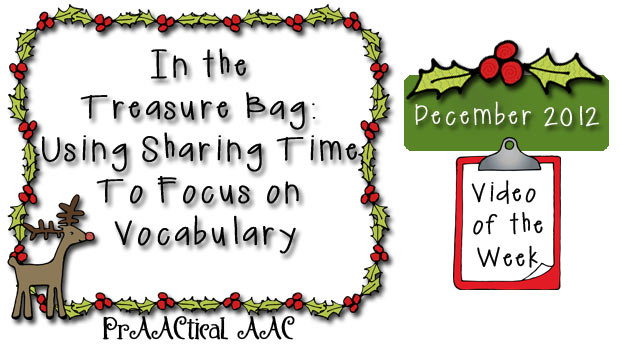
Over the past few months, we’ve been advocating for a multi-stage process for vocabulary teaching that begins with focused (aided) language stimulation and explicit instruction. The approach we described then moves into engaging practice activities while we continue to provide exposure and opportunities for retrieval, with periodic comprehension checks. This cycle allows SLPs to make use of research-based strategies in their semantic intervention and get the best outcomes for their AAC learners. So, when we came across this video about how to use ‘Sharing Time’ to build vocabulary, we knew we wanted to share it. It describes a classroom activity that could also be adapted for therapy groups in which students take turns bringing in an time from home to share with the class. We love the visual support that helps the students know what to talk about. It is a great reminder that visual supports are part of good... [Read More...]
December 7, 2012
by Carole Zangari -
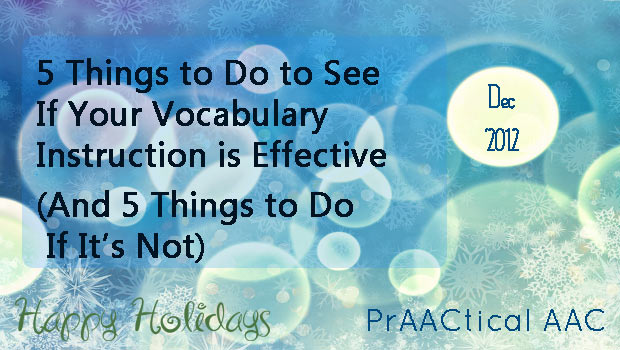
Last month, we talked a lot about semantic intervention with people who are learning AAC. Once we got started, we realized we could have done another whole month on the topic, but we had to move on. We ran out of time before we could really talk about outcome measures. As clinicians, how do we determine whether our therapy is effective? Here are some things to do after you’ve provided high-quality, well-sequenced vocabulary instruction. Make small comprehension checks a regular part of your instruction. Ask the AAC learner to tell you about ___ . Then score their response as objectively as possible (e.g., complete & correct, correct but incomplete, vague, incorrect). You’ll get some real-time feedback and can clarify or re-teach as necessary. Assess in a standardized fashion. Standardized means doing something the same way each time. Set up appropriate assessment tasks that allow you to judge how well the... [Read More...]
March 28, 2012
by Carole Zangari -
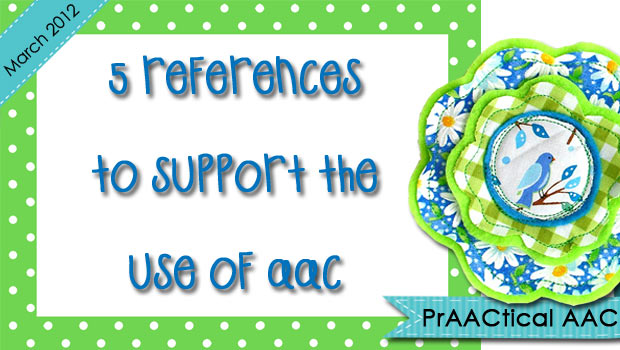
When I took my daughter to a specialist awhile back, she recommended a treatment that was a bit extreme. Her verbal explanation for the expensive and involved treatment made sense, but I still wasn’t convinced and asked it there was something we could read that explained the scientific underpinnings of the approach. She disappeared for a moment and came back with a task force report on the treatment that reviewed literature on this approach. Reading through it and seeing the studies, critiques, and responses helped us make an informed decision. – Chances are, many of you have had similar experiences. Trust in our healthcare professionals is critical, but when it comes to big decisions, we want to know the science that stands behind the options. – Making the decision to use AAC is a huge one for all of us, but families are especially burdened with its weightiness. Not only... [Read More...]
January 14, 2012
by Carole Zangari -
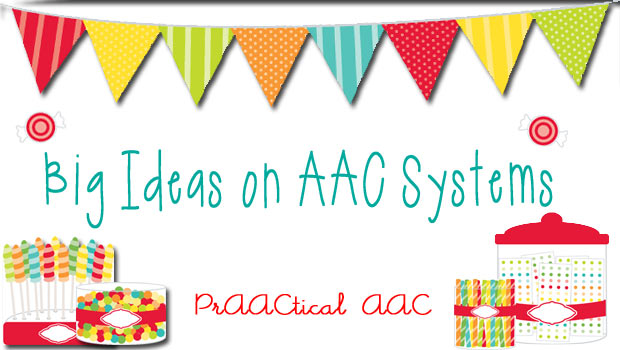
I had some great conversations with families this month about AAC and how to effectively translate strategies from therapy and school to a home environment. Although their children were all different ages, had various disabilities, and used a diverse set of AAC tools, there were a couple of common elements in those conversations.One thing that played a central role was this question: What IS an AAC system? We all know the textbook definition of AAC and that it refers to a set of tools, techniques, and strategies used to enhance the communication of people with significant language difficulties. We know that AAC is often subdivided into unaided communication (including gestures, signs, movement, vocalization, etc) and aided communication (such as communication books, speech generating devices [SGDs], and choice boards).But the general case is only helpful if you’re in AAC class or studying for the PRAXIS. In clinical practice, we need to... [Read More...]








